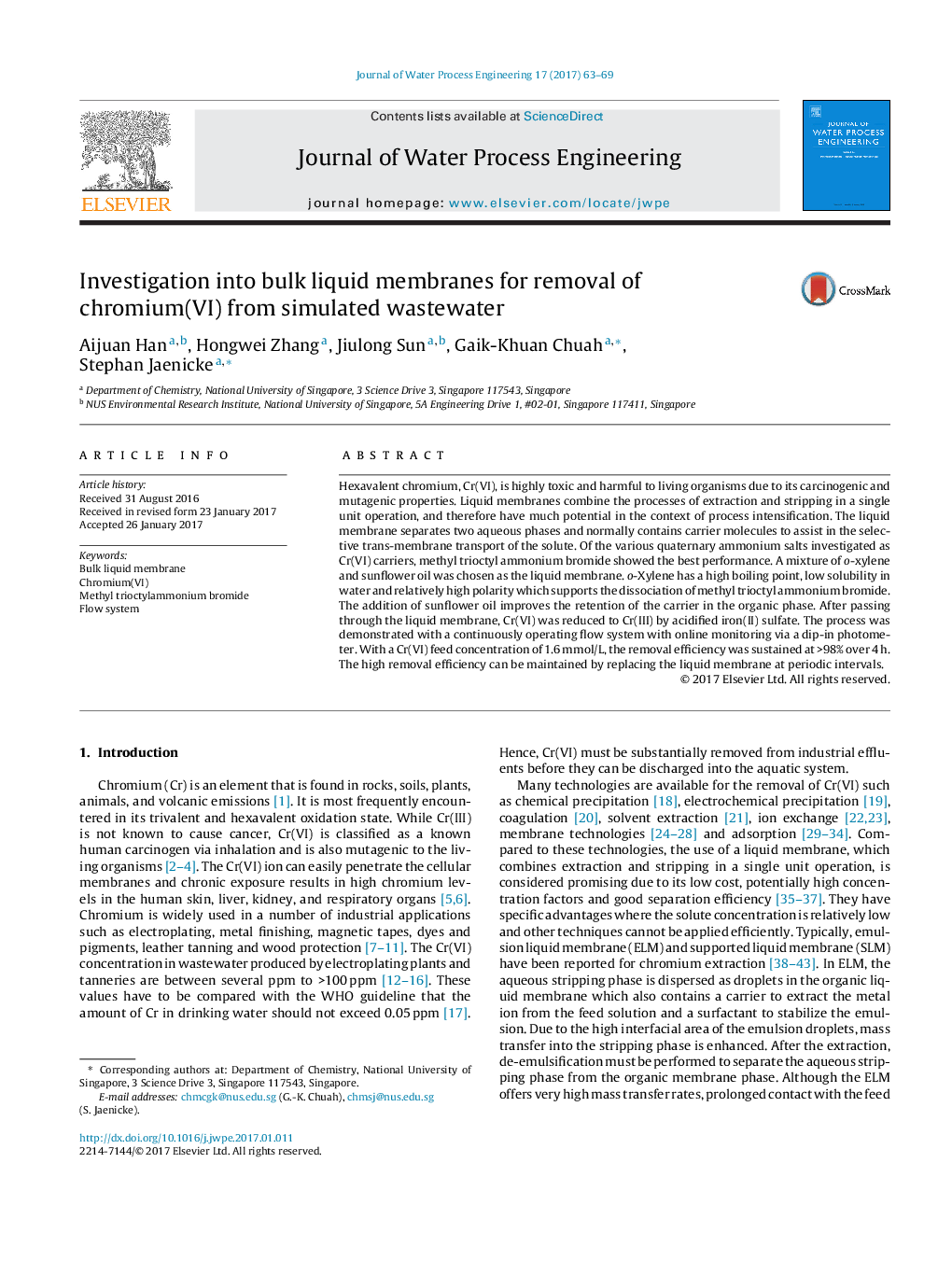| Article ID | Journal | Published Year | Pages | File Type |
|---|---|---|---|---|
| 4909910 | Journal of Water Process Engineering | 2017 | 7 Pages |
Abstract
Hexavalent chromium, Cr(VI), is highly toxic and harmful to living organisms due to its carcinogenic and mutagenic properties. Liquid membranes combine the processes of extraction and stripping in a single unit operation, and therefore have much potential in the context of process intensification. The liquid membrane separates two aqueous phases and normally contains carrier molecules to assist in the selective trans-membrane transport of the solute. Of the various quaternary ammonium salts investigated as Cr(VI) carriers, methyl trioctyl ammonium bromide showed the best performance. A mixture of o-xylene and sunflower oil was chosen as the liquid membrane. o-Xylene has a high boiling point, low solubility in water and relatively high polarity which supports the dissociation of methyl trioctyl ammonium bromide. The addition of sunflower oil improves the retention of the carrier in the organic phase. After passing through the liquid membrane, Cr(VI) was reduced to Cr(III) by acidified iron(II) sulfate. The process was demonstrated with a continuously operating flow system with online monitoring via a dip-in photometer. With a Cr(VI) feed concentration of 1.6Â mmol/L, the removal efficiency was sustained at >98% over 4Â h. The high removal efficiency can be maintained by replacing the liquid membrane at periodic intervals.
Related Topics
Physical Sciences and Engineering
Chemical Engineering
Chemical Engineering (General)
Authors
Aijuan Han, Hongwei Zhang, Jiulong Sun, Gaik-Khuan Chuah, Stephan Jaenicke,
